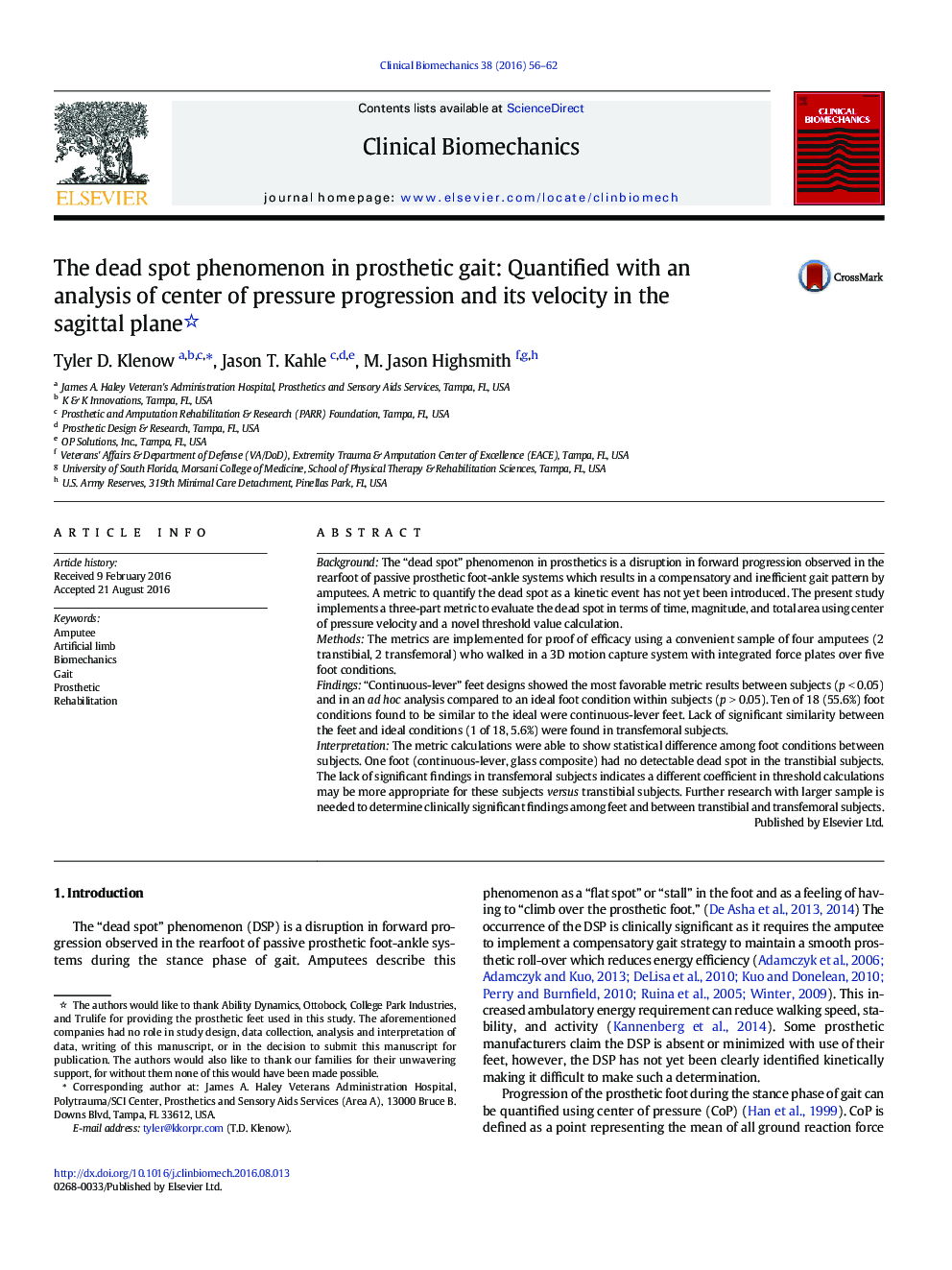| کد مقاله | کد نشریه | سال انتشار | مقاله انگلیسی | نسخه تمام متن |
|---|---|---|---|---|
| 4050057 | 1603740 | 2016 | 7 صفحه PDF | دانلود رایگان |
• A metric to quantify the “dead spot” phenomenon in prosthetic feet was developed and implemented.
• Metric values include dead spot qualifying time, dead spot magnitude, and total dead spot area.
• Values for each foot were compared to a hypothetical ideal foot condition to detect the dead spot.
• Continuous-lever feet were found to have the smallest dead spots in transtibial subjects.
• A lack of significant results were found in the transfemoral subjects.
BackgroundThe “dead spot” phenomenon in prosthetics is a disruption in forward progression observed in the rearfoot of passive prosthetic foot-ankle systems which results in a compensatory and inefficient gait pattern by amputees. A metric to quantify the dead spot as a kinetic event has not yet been introduced. The present study implements a three-part metric to evaluate the dead spot in terms of time, magnitude, and total area using center of pressure velocity and a novel threshold value calculation.MethodsThe metrics are implemented for proof of efficacy using a convenient sample of four amputees (2 transtibial, 2 transfemoral) who walked in a 3D motion capture system with integrated force plates over five foot conditions.Findings“Continuous-lever” feet designs showed the most favorable metric results between subjects (p < 0.05) and in an ad hoc analysis compared to an ideal foot condition within subjects (p > 0.05). Ten of 18 (55.6%) foot conditions found to be similar to the ideal were continuous-lever feet. Lack of significant similarity between the feet and ideal conditions (1 of 18, 5.6%) were found in transfemoral subjects.InterpretationThe metric calculations were able to show statistical difference among foot conditions between subjects. One foot (continuous-lever, glass composite) had no detectable dead spot in the transtibial subjects. The lack of significant findings in transfemoral subjects indicates a different coefficient in threshold calculations may be more appropriate for these subjects versus transtibial subjects. Further research with larger sample is needed to determine clinically significant findings among feet and between transtibial and transfemoral subjects.
Journal: Clinical Biomechanics - Volume 38, October 2016, Pages 56–62
